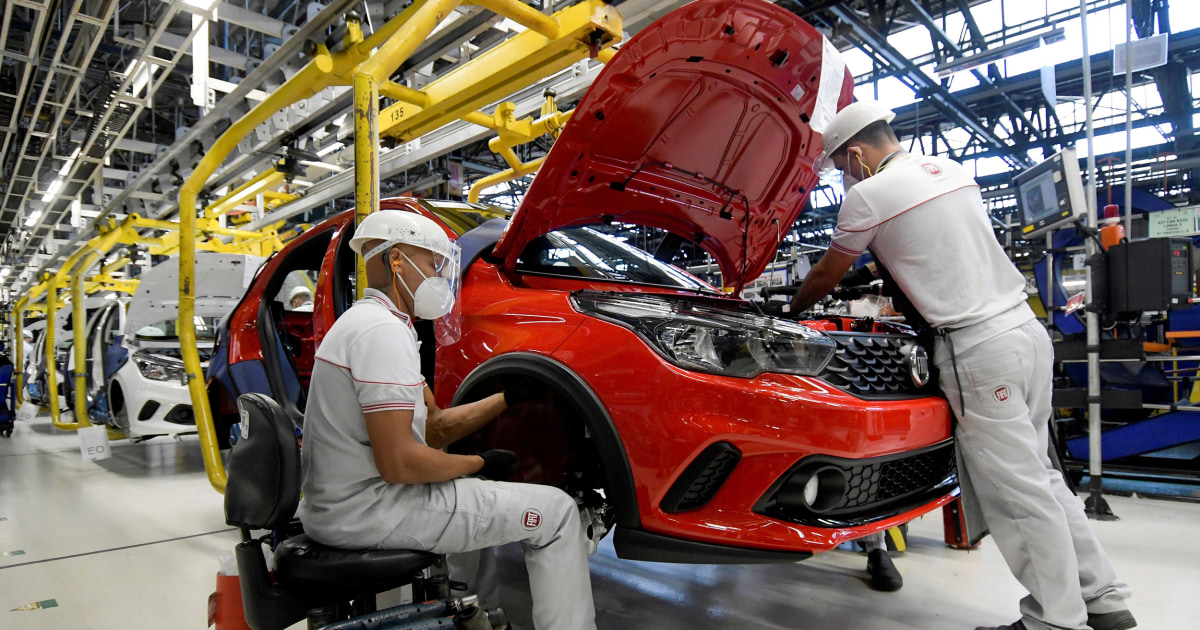By overwhelming margins, shareholders of Fiat Chrysler Automobiles and Peugeot Group PSA on Monday morning approved a $ 58 billion merger creating the world’s fourth largest automaker, Stellantis.
The deal ends the search for an FCA partner for a decade, after the automaker was previously rejected by rivals such as General Motors and Volkswagen. The authorities have suggested that the merger will yield billions of dollars in annual savings, helping Stellantis accelerate the development of electric and self-driving vehicles that are expected to transform the auto industry in the next decade.
But there will still be many challenges, starting with a double-digit drop in global auto sales last year due to the coronavirus pandemic. As Stellantis, there may be significant pressure to part with some of the new company’s weaker brands, including Fiat and Chrysler with the same name as FCA.
“Stellantis will be a kind of conglomerate of brands, some excellent and others not so good and the majority very regional,” said Jefferies analyst Philippe Houchois. The list also includes Jeep, Ram, Dodge, Maserati and Alfa-Romeo on the side of Fiat Chrysler, as well as Peugeot, Citroën, DS, Opel and Vauxhall. “The merger,” added Houchois, “will be a good opportunity for a reboot.”
PSA has been looking for ways to re-enter the US market after an absence of three decades. But it is strong in China, where Fiat Chrysler has only a modest presence.
In separate online voting, the merger was approved by 99.15% of FCA shareholders and 99.85% of PSA investors.
The decade-long search was initiated by ex-FCA CEO, the late Sergio Marchionne, even before Fiat Italy completed its own merger with Chrysler. The Detroit-based automaker was on the verge of bankruptcy when then President Barack Obama approved a federal bailout only after Fiat agreed to become Chrysler’s white knight.
Marchionne’s efforts to find another partner were repeatedly rejected. It was only after the CEO’s unexpected death in July 2018 that his successor, Mike Manley, finally got a potential marriage partner. But the deal with the French Renault collapsed at 11 am.
Unexpectedly, Manley announced another deal months later, this one with Renault’s archrival, Peugeot. The ties between Chrysler and Peugeot have stretched for decades and industry analysts have seen many synergies in the business. On the one hand, the two automakers have gaps in their line that the other can fill. The same is true from a geographical perspective. PSA, for example, is looking for ways to re-enter the United States market after an absence of three decades. But it is strong in China, where Fiat Chrysler has only a modest presence.
The partners set some difficult goals in the final phase of their negotiations. At first, the authorities estimated that they could achieve savings of 3.7 billion euros, or $ 4.5 billion, through various efficiencies. Subsequently, they increased to just over $ 6 billion.
But the pandemic has made forecasting, whether unit sales, revenue or earnings, extremely difficult. And analysts’ expectations are that it will take almost mid-decade for global sales to reach pre-pandemic levels. This can make it difficult to meet these goals.
Stellantis will face many other challenges. FCA and PSA lagged behind in the development of technologies that should revolutionize the industry in the next decade. The new automaker will be under pressure to increase spending on autonomous and electrified vehicles in the coming years. On the battery-powered side, Stellantis will have to catch up with the main competitors who are taking the lead in the race to bring electric vehicles to market.
Under the agreement, FCA President John Elkann – heir to the founding family of Fiat – will retain his title at Stellantis. The same will happen with Carlos Tavares, the renowned CEO who is credited with turning the French company around since he joined it six years ago. Significantly, PSA managed to put the Opel / Vauxhall unit in the blue within a year after acquiring the German operation from General Motors. Under GM, Opel had been in the red for almost two decades.
Until last month, it was unclear what would happen to FCA CEO Manley. He will now serve as head of Stellantis’ operations in the Americas. Among its challenges will be the multi-phase revival of the Peugeot brand in the United States and Canada.
Manley, like his mentor Marchionne, strongly believes in scale. FCA was the eighth largest automaker in the world in 2019, and PSA the ninth. Combining their fortunes would put them fourth in vehicle sales – ahead of traditional General Motors, but behind Volkswagen, Toyota and the Renault-Nissan-Mitsubishi Alliance.
But with the industry plagued by the coronavirus pandemic, let alone facing a wave of new competitors like Tesla, it is far from certain that size alone matters as before.
“The auto industry has been chasing size and consolidation for years, but it took longer to arrive than many would like to see,” wrote Jefferies analyst Philippe Houchois, in a note to investors. “The question is whether GM, Toyota and Renault-Nissan have provided evidence that there may be limits to this strategy.”
